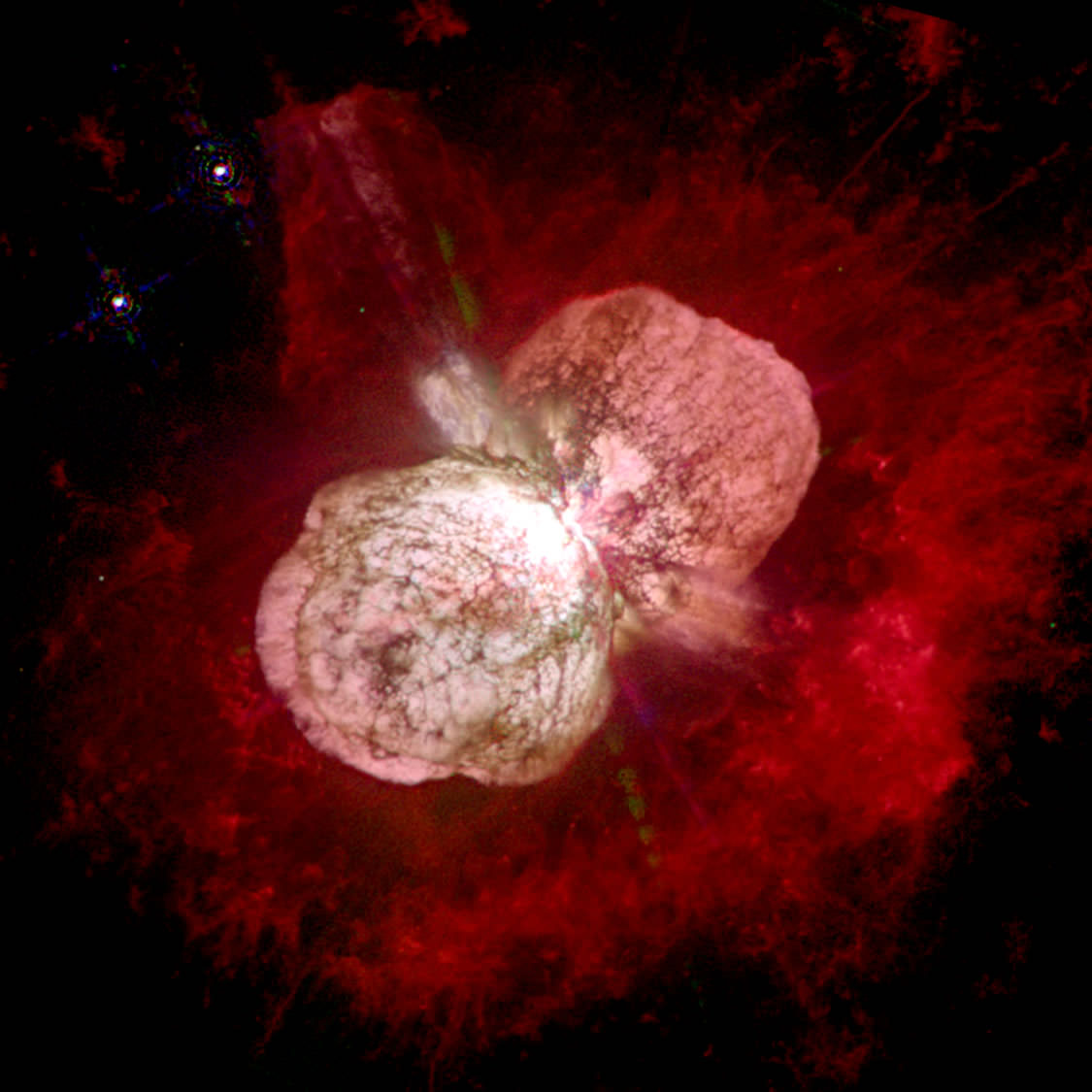[/caption]
Luminous Blue Variables (LBVs) are a rare class of extremely massive stars that teeter on the very edge of being stable. The most famous of this class of stars is the well studied Eta Carinae. Like many other LBVs, Eta Carinae is shrouded in a nebula of its own making. The instability of the star causes it to throw off large amounts of mass even during its brief main sequence lifetime. What makes these stars so unstable is an open question which has been difficult to answer do the the paucity of known LBVs. Given that the initial mass function predicts that such massive stars should be rare, this is not surprising, but identifying these stars is often made even more difficult due to the reddening caused by their nebulae.
However, an international team working from Russia and South Africa proposes that the nebula itself may be able to help identify potential candidates of LBVs. To test out their hypothesis, they scanned the Spitzer image archives for nebulae with features similar to those of known LBVs. The feature that distinguished potential LBV nebulae from other nebulae was emission only in the 24 ?m images (likely due to the fact that nebulae do not operate as model blackbodies at such wavelengths, but instead emit most strongly at specific wavelengths due to fluorescence).
In their review of potential nebulae, they identified a one known as MN112. To further explore the possibility, the team took high resolution spectra of the central star. They determined the central star had strong similarities to the known LBV P Cygni. Most notably, the candidate LBV showed very strong emission lines for hydrogen and He I right next to absorption lines for the same elements. This is caused by high pressure regions, either in the atmosphere of the star, or as the faster wind from the star interacts with a slower moving nebula around it. The high pressure region becomes more dense and gives emission lines. Since it moves outwards, it is slightly blueshifted and thus, does not appear directly on top of the absorption line caused by the relatively less dense atmosphere. This time of feature is known as a P Cygni profile.
Another identifying feature of Luminous Blue Variables is that they are variable (Surprise!) up to as much as 1-2 magnitudes. The team had records of the star from photographic plates dating back as far as 1965 as well as more recent CCD measurements and found that the star had not been seen to vary significantly from an apparent blue magnitude (mB) of 17. However, in the infrared region, they determined (using their own photometric observations) that the star had brightened by 0.4 magnitudes over the past 19 years. Although this falls short of the expected variability for a LBV, they suggest “it is quite possible that a significant fraction of LBVs (if not all of them) goes through the long quiescent periods (lasting centuries or more; e.g. Lamers 1986) so that the fast variability (on time
scales from years to decades) observed in the vast majority of classical LBVs could be merely due to the selection effect.”
The authors state their intention to continue observation of this candidate LBV “in the hope that the ”duck” will ”quack” in the foreseeable future.”


This is fascinating and the photo of Eta Carina is one of the most beautiful that I have ever seen.
I am trying to find out the dimensions of Eta Carina. Can anyone tell me, please?
Sam,
Wikipaedia says it is 100 solar masses and probably a binary. The Celestia program (download it and then get eta carina from the motherlode site) says the nebula has a diameter of 732 AU – for comparison the short end of the heliopause is 80-100 AU
SteveZodiac
Many thanks. I should have thought to look it up in Wikipaedia.
Sam